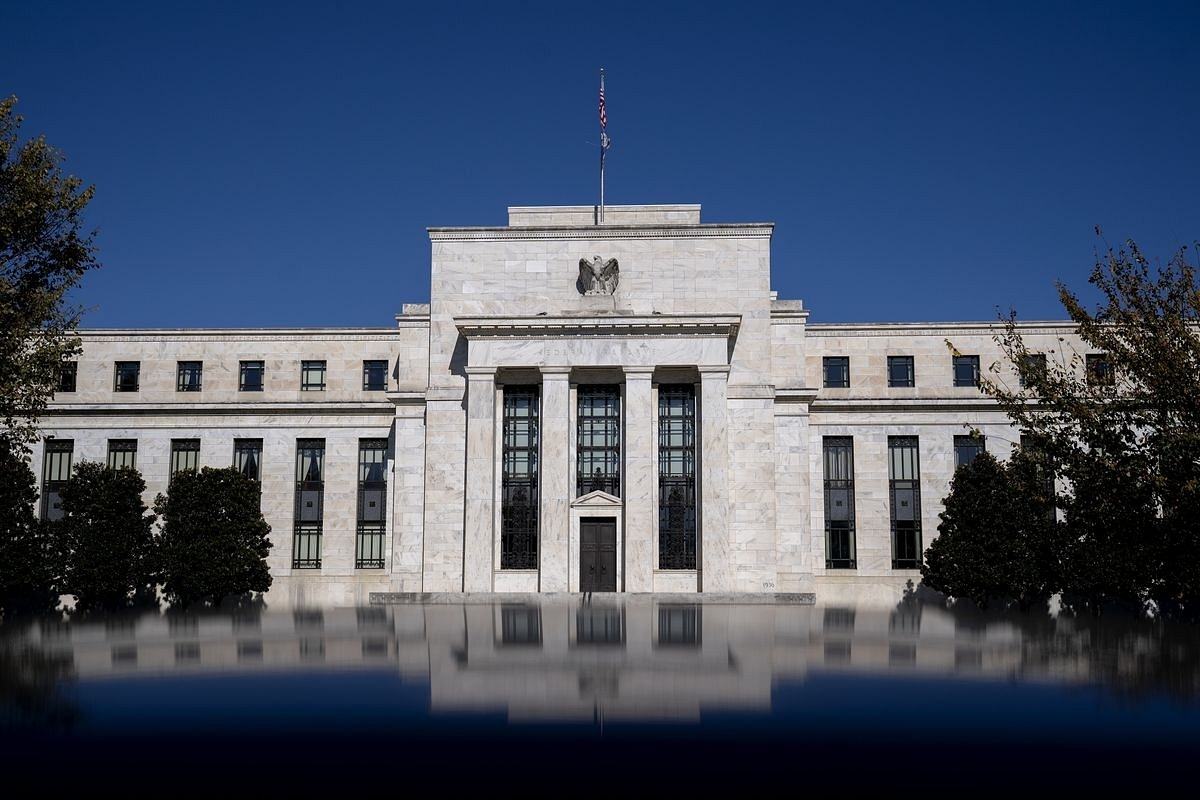World
Fed Raises Interest Rates By 75 Basis Points To Tame Inflation; Sharpest Rise In US Interest Rates Since 1994
- The Fed projected that it would hike rates by another 175 bps by the end of the year, to a level far above what it estimated in March.

US Federal Reserve
In its quest to fight soaring inflation, the Federal Reserve has raised interest rates again.
The Fed hiked interest rates by a mammoth 75 basis points (bps), which is the biggest rate increase since 1994. Through interest rate increases, the Fed is attempting to raise the cost to borrow money, slow economic activity, and bring down inflation in America, that’s ripping at 40-year-highs.
What led us here?
In 2021, Fed officials deemed inflation a “transitory” consequence of pandemic reopenings. But due to a mix of stronger than expected consumer demand, persistent logistics bottlenecks, Covid lockdowns in China, and the outbreak of war in Ukraine, prices kept going up.
Even as recently as just a few weeks ago, policymakers signaled they would be hiking rates by 50 bps. But prices have continued to climb sharply.
The consumer price index data in America, which was released last Friday (10 June), showed that inflation jumped to 8.6 per cent in May. This was a huge disappointment to the many economists who thought it might have peaked, and an indication that the Fed had to hike rates by an even greater amount.
What happens now?
Even more rate increases. The Fed projected that it would hike rates by another 175 bps by the end of the year, to a level far above what it estimated in March.
Hiking interest rates this hard, this fast is painful for the economies and likely puts people out of work.
That’s the point, after all—people need to spend less for prices to come back down to earth. And it seems like that’s already happening, however, the risk is, that whilst combatting inflation, the Fed in US triggers a recession.
According to an analysis on inflation by Deutsche Bank, inflation has become a global phenomenon. The analysis included 111 countries.
Among these countries, the median rate of 7.7 per cent year-over-year inflation has more than doubled from 3.0 per cent one year ago. The main driver behind this rise is spiking energy and food prices.
According to the World Bank’s index, food commodity prices are at a record high and have risen sharply since Russia's invasion of Ukraine. The twin rise in food and energy prices is hitting countries particularly hard.
Energy prices in the U.S. are up 35 per cent over last year, according to the Bureau of Labor Statistics. In the UK they have spiked even higher, witnessing a sharp rise of 51 per cent. UK runs the risk of staring at a cost of living crisis.
South Korea's President Yoon Suk-yeo has warned of an impending economic "typhoon", as per a report from FT.
China has significantly less inflation, compared to other countries. According to a report by WSJ, China remains an outlier in a world of surging inflation due to strong price controls and weak consumer demand coupled with Beijing’s relatively limited stimulus during the pandemic.
Support Swarajya's 50 Ground Reports Project & Sponsor A Story
Every general election Swarajya does a 50 ground reports project.
Aimed only at serious readers and those who appreciate the nuances of political undercurrents, the project provides a sense of India's electoral landscape. As you know, these reports are produced after considerable investment of travel, time and effort on the ground.
This time too we've kicked off the project in style and have covered over 30 constituencies already. If you're someone who appreciates such work and have enjoyed our coverage please consider sponsoring a ground report for just Rs 2999 to Rs 19,999 - it goes a long way in helping us produce more quality reportage.
You can also back this project by becoming a subscriber for as little as Rs 999 - so do click on this links and choose a plan that suits you and back us.
Click below to contribute.
Latest